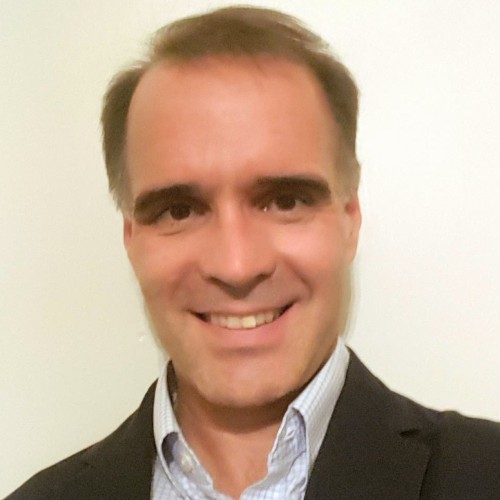Alpha Edge Recognition - Multi-Asset Investment Approach
This year, Allocator Intel will be recognizing leaders in the allocator community, acknowledged by their peers, for exceptional leadership in key areas of portfolio construction in the Alpha Edge Recognition Awards.
Fred Greear, Chief Investment Officer, Carilion Clinic, is nominated for his fund’s Multi-Asset Investment Approach at the $2.9 billion healthcare portfolio, foundation, and pension where he has built a team from scratch and brought a completely restructured portfolio in-house.
Fred is a graduate of Vanderbilt University, where he attended the Owen Graduate School of Management, and has an undergraduate degree from Denison University, where he received his bachelor’s degree in philosophy. He entered the investment industry in 2001 on the GP side at Lord Abbett & Co., then Cohen & Steers in 2006. In 2010, he joined the LP side at a corporate pension fund, The Pension Boards–United Church of Christ, Inc.;in 2011, he left for HII Corporate, formerly Huntington Ingalls Industries, the largest military shipbuilding company in the United States.
At Carilion, in Roanoke, Virginia, he has redefined the portfolio, restructuring it over the last year, transforming a custom-benchmarked portfolio to a 60-40 asset allocation and redefining the governance structure — all with a lean team of five.
The following is edited for length and clarity.
 Tell us a little bit about your role
Tell us a little bit about your role
I’ve been at Carilion for eight years; I joined first as internal director of investments. Last year, we did some restructuring, and my title changed to Chief Investment Officer. When I joined, we had an outsourced portfolio we’d run since the ‘90s, and we started bringing more of the portfolio in-house, starting on making changes to manager selection.
Ultimately, we terminated that consultant relationship. The previous outsourced model was a policy benchmark comprised of five parts, half of which were custom-benchmark components. What we’ve done is change it to a straight-up 60/40 public-equity/fixed-income benchmark. We looked at the custom benchmark that the consultant historically had, and it had underperformed the 60/40, so we thought having a bit more equity orientation, and that consistent benchmark created a higher bar to achieve returns.
Now, we do everything internally, with the exception of an operational due diligence consultant that does a desktop review of any new manager.
Tell us a little bit about how your portfolio looks today
We’ve oriented the portfolio a bit more toward equity, so now we have long-short equity benchmarked against the MSCI ACWI;before, the consultant benchmarked it against the HFRI, so we changed it to have higher returns over time.
We have a 25% target to private investments, whichwe can use across private equity and private fixed income. The majority is in venture, growth equity, direct investments, and a smaller amount in private direct lending strategies.
What are the specific factors and opportunities that you look for?
The primary objective is return enhancement. On the private equity side, we have some more bespoke strategies like litigation finance and specialty funds in Asia, Europe, and Latin America; we also look for niche opportunities in a sector basis: In long-short equity, we have sizeable exposure to biotech because we think that has potential to add alpha over the broad equity markets long-term.
Within fixed income, it’s slightly different. It’s a return orientation, but it’s also hedging and diversification. In the current environment, we have been building our Treasury exposure in anticipation of an economic slowdown.
What are some of the key factors you’re focused on?
We have approximately 70 investment firm relationships in the portfolio. We have a few multi-manager relationships, such as platform relationships, which we believe is an efficient way for us to gain exposure to targeted areas of the market. We view our multi-manager relationships as strategic, giving us access to emerging managers as well as co-investment opportunities.
We balance our meaningful exposure to smaller, emerging manager with a few of the largest investment management firms, which also provide us broader resources such as economic and market research.
What are some of the investment opportunities in the next 12 to 18 months?
In the last few months, we’ve trimmed back public equity, so if there is a growth slowdown going into late 2023 and 2024, we believe our portfolio should have decent downside protection and resiliency from long-duration Treasuries.
We have some private China exposure, and we’re maintaining it; it’s a tough market, given the U.S.-China relationship. We added a private global biotech strategy focused on both the U.S. and China, and we’re looking to add a real estate strategy lending at some point, given the dislocation in some property market sectors and credit tightening following the problems Silicon Valley Bank and First Republic faced.
What would you say is your greatest accomplishment?
We have worked to make changes to our investment processes, manager selection, and asset allocation to generate better performance over the last eight years. We are generalists, so we’re all involved in all aspects of the portfolio; two of the five of us joined a year ago, and we’ve been able to attract people remotely: one out of New York, one out of Cleveland. (Southwest Virginia is a small market, so we don’t have a natural flow of workers in the investment industry moving to the area.)
The other thing that works well for us is that we have strong, supportive relationships with our senior management, Finance Committee, and Investment Sub-Committee. The two committees take a high-level governance approach, and they delegate manager selection and portfolio strategy to the investment team: That enables us to act nimbly and make decisions between meetings, so I think the governance process we have is very thorough, and it empowers the investment team to be accountable.
For more content of Investor Week, visit the group here.
To discuss the content of this article or gain access to like content, log in or request membership here.
